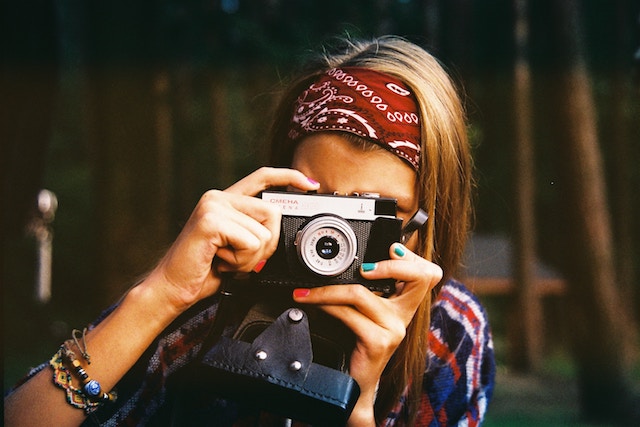
“Be still with yourself until the object of your attention affirms your presence.” ~ Minor White
~
Photography is all about relationship.
For artist and educator, Minor White, photography was not just about the camera; it was often not even about the picture. It was about developing a relationship with the world around us. Like so many spiritual teachers (who speak to a deeper focus in life through art), stillness is a pre-requisite for a deeper connection to life—for deepening our relationship with our very existence.
When we make an image with a camera, we are recording a precise moment of a relationship between ourselves and the object of our attention. In every photograph, there are always two people involved: the person looking at the image and the photographer who made that image.
Student of White’s and Zen master, John Daido Loori Roshi (1931-2009), spoke about White’s “process” of photographing a subject. Its purpose, like all Dharma arts, was simply to get out of the way. To let the brush move itself across a page, as in Zen calligraphy. To let the arrow release itself from the bow, as in Zen archery.
A camera is no different. Mindful photography is just a matter of letting the camera guide our hand to an image. To achieve this, though, Daido Loori Roshi says there are some preparatory steps to take in the spirit of Zen art—especially when the subject is in nature (a significant location in Dharma art).
Here are Roshi’s 10 steps for taking photographs in nature:
1. Go out into nature without any preconceived idea of what we want to photograph.
2. Be open and receptive.
3. Let the subject find us—a rock, a tree, or a flower.
4. When we find the subject, allow a resonance to occur, feeling an energy between us and the subject going back and forth.
5. Sit in the presence of the subject before setting up the shot.
6. Wait for a sense of permission from the intended subject before using the camera.
7. Then set up the shot.
8. When that resonance peaks, release the shutter.
9. When that click happens, the process is over, provided that we feel a sense of completion.
10. Bow to the subject, thank the subject, and then leave.
The sense of completion is important; it signifies that we have established empathy with the subject, that we are in rapport with it, and that, in turn, it has acknowledged our presence. If we don’t get this sense of completion, Roshi says to keep going with the photo shoot.
I have a recent personal example I’d like to share:
While making a short video documentary about another photographer, I used an opening shot of a solitary tree that grew in an estuary near my home in Queensland, Australia. I shot the video when it was morning at high-tide on an overcast day, but I realised then that, instead, the tree would make a great subject when the sun was setting behind it and the tide was out. I made a note to go back on a sunny late afternoon.
Seeing this single tree in a new setting, it seemed to have a more powerful, energetic presence that I didn’t detect on that morning. I know that, while making videos, I am in a different frame of mind. I’m less focused on things around me and more on the video making process. But with still photography, I can easily trigger this deeper connection with things, in a flow state, from the focus I am experiencing. With the sun setting behind the tree, I began to establish a silent rapport by walking up to the tree with an attitude of reverence, while at the same time, having a kind of silent conversation with it about the best lighting for the shot.
Eventually, after standing in front of it for some time without reaching for my camera, there was that completion feeling when I resumed shooting after one particular shot—it just clicked itself deeply inside me.
I thanked the tree and left before the tide came back in.
I have found that with this approach, each completed moment eases me deeper into connection with a flow state. “Flow state” is the optimally-focused state of human creative performance. On city shoots, I have found that carrying a digital device such as an iPod, iPad, or iPhone is best for triggering flow because of the simplicity of point and shoot—since I am not distracted by the technical details of adjusting a DSLR camera.
With this kind of “deep focus photography,” we establish a deeper relationship to, and with, what is around us. With all the things that we take for granted which inhabit our world and wish to be noticed by us in a mindful way.
Technology can both connect and isolate us. A photograph can profoundly connect humans at the heart level, as we know from photo journalism. But images on social media can also isolate individuals in a web of online anonymity. If we use a camera to connect with the world as a perceptual device, extending our consciousness to the things around us, we grow more compassion for one another.
This is significant not only in our day-to-day living, but I feel also in our spiritual development through our experience of interconnectivity.
The poet David Whyte, in The Conversational Nature of Reality, speaks of our disconnection with physical things being the cause for our loneliness. We must resume our dialogue with the outer world.
“Your great mistake is to act the drama as if you were alone.
As if life were a progressive and cunning crime
with no witness to the tiny hidden transgressions.
To feel abandoned is to deny
the intimacy of your surroundings.
Surely, even you, at times, have felt the grand array;
the swelling presence, and the chorus,
crowding out your solo voice.
You must note the way the soap dish enables you,
or the window latch grants you freedom.
Alertness is the hidden discipline of familiarity.
The stairs are your mentor of things to come,
the doors have always been there to frighten you and invite you,
and the tiny speaker in the phone is your dream-ladder to divinity.
Put down the weight of your aloneness and ease into the conversation.
The kettle is singing even as it pours you a drink,
the cooking pots have left their arrogant aloofness
and seen the good in you at last.
All the birds and creatures of the world
are unutterably themselves.
Everything is waiting for you.“
There is much in this poem that relates to photography and guides us toward a deeper focus—to a deeper relationship with life. As he says, “everything is waiting for you” to reach out.
A camera is a way you can reach out with your image-ination.
Your imagination is the key to creative composition. It’s the key to all art. To make a photographic composition, we have to be composed first. We have to be calm inside. Minor White alludes to this in, Be Still with Yourself. To feel the resonance of energy that Daidio Roshi Loori talks about, we have to be quiet inside. To notice the simple things that David Whyte poetically reminds us of, we need to be calm inside.
Mindfulness meditation helps us work with the distraction of overthinking and returns our focus to the present moment—thereby deepening our experience of what is there moment to moment.
Both Minor White and John Daidio Loori (through photography), and David Whyte (through poetry) acknowledge a wider, deeper perception of the experience of things we normally perceive in physical reality. It is akin to the “unified field” theory of energy coherence that exists in the new physics, and which has been known for millennia from the Vedic sciences.
Mindfulness training in photography helps us experience a new depth of field, not as a characteristic of a lens, but as an innate human perception of the world. As I have said, a calm and receptive mind is a creative mind, a mind that brings a consciousness into a camera to capture a decisive moment.
I believe a smart camera is a tool for global spiritual awakening.
~
Relephant read:
Chogyam Trungpa Rinpoche on Dharma Art, and the Art of Life.
~
Author: Martin Wetherill
Image: Kit Junglist/Unsplash
Editor: Danielle Beutell
Copy Editor: Travis May
Social Editor: Travis May







Read 1 comment and reply